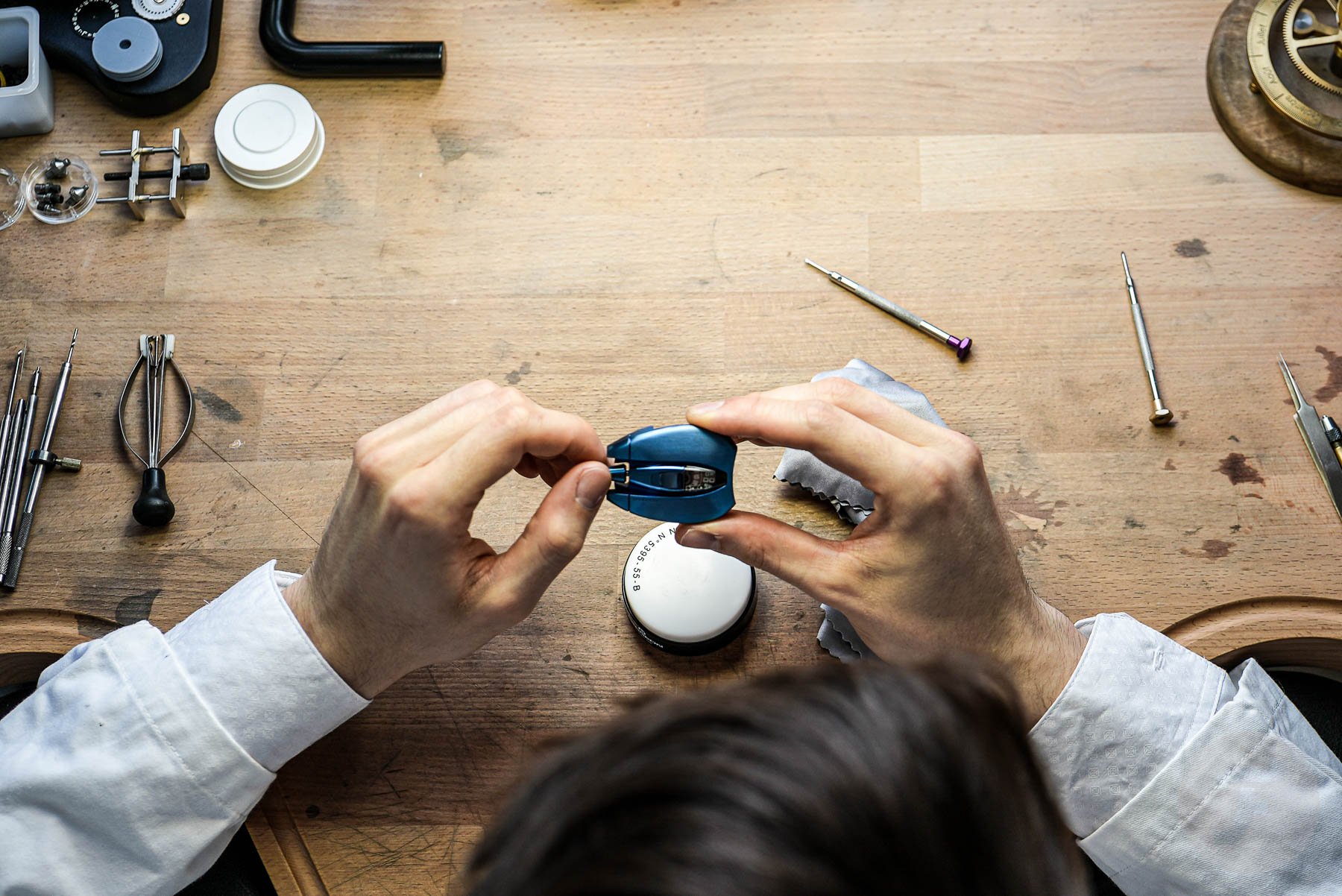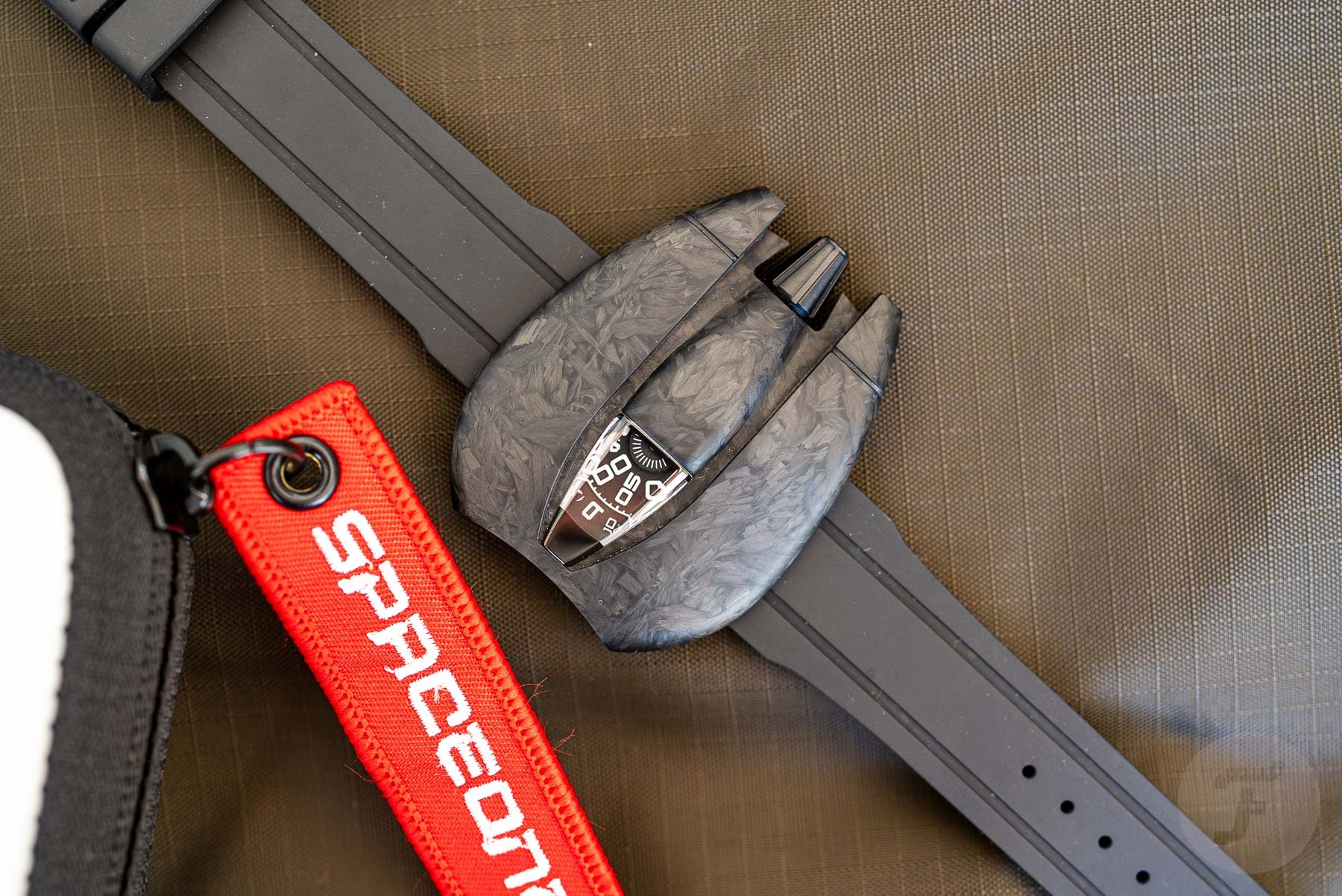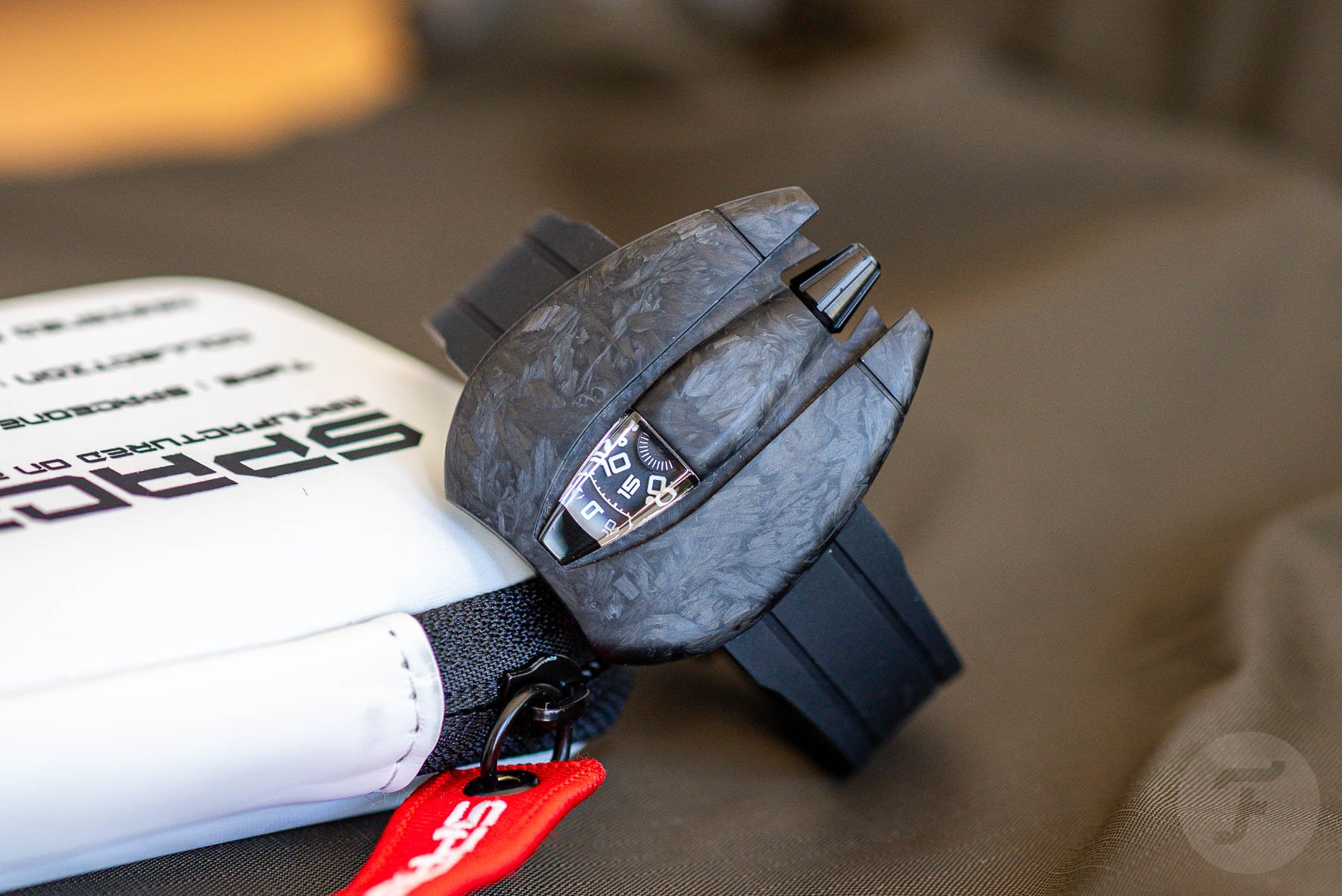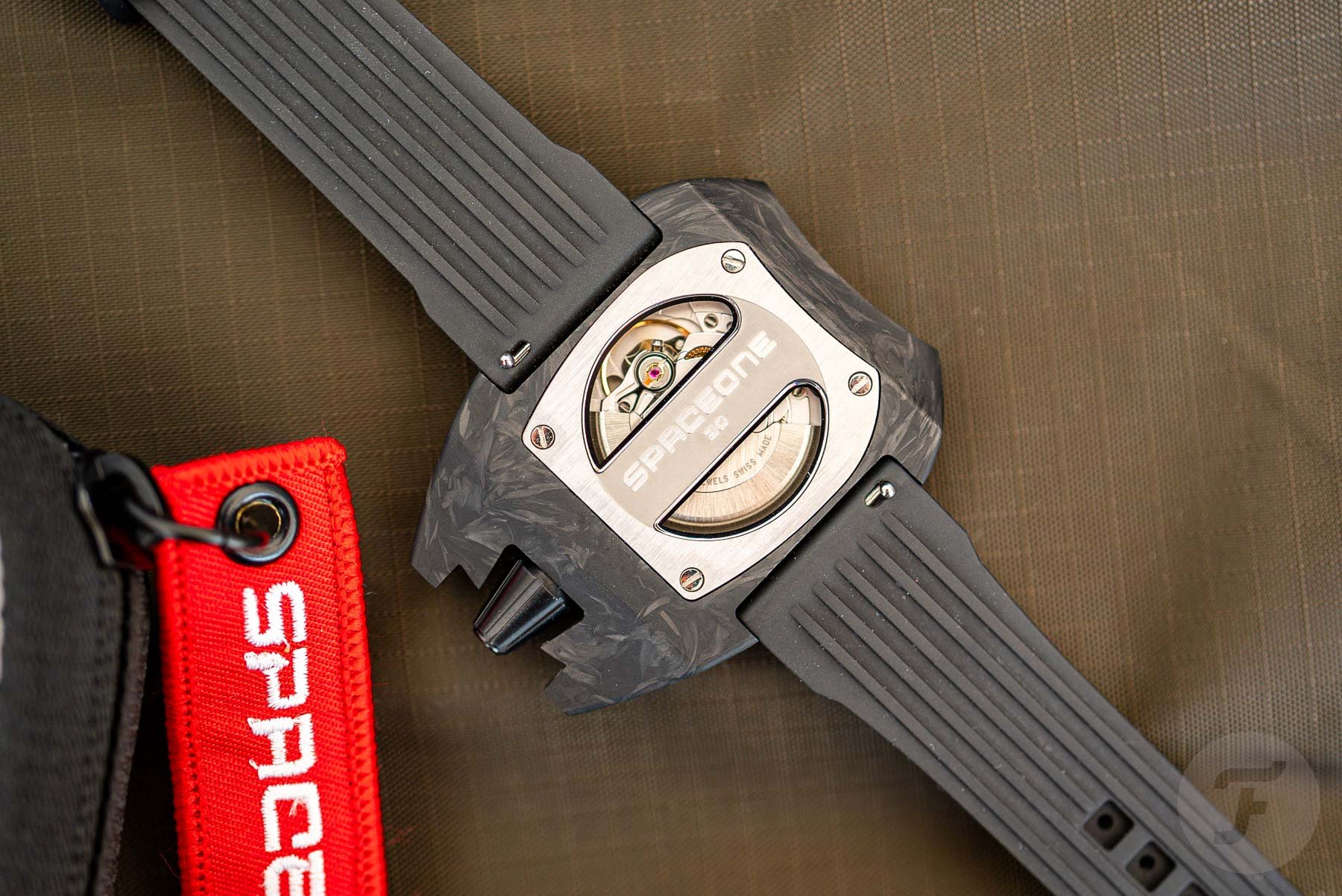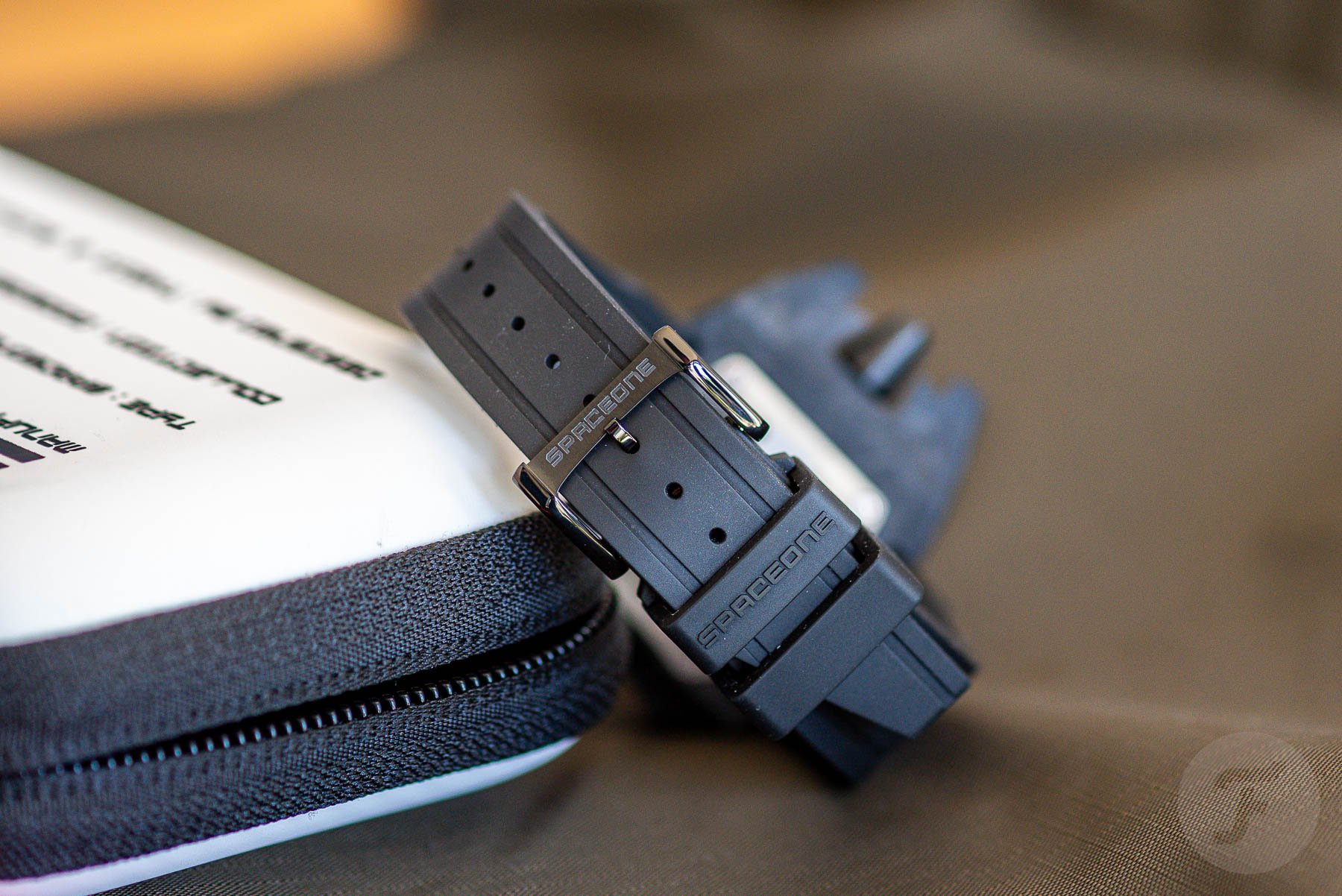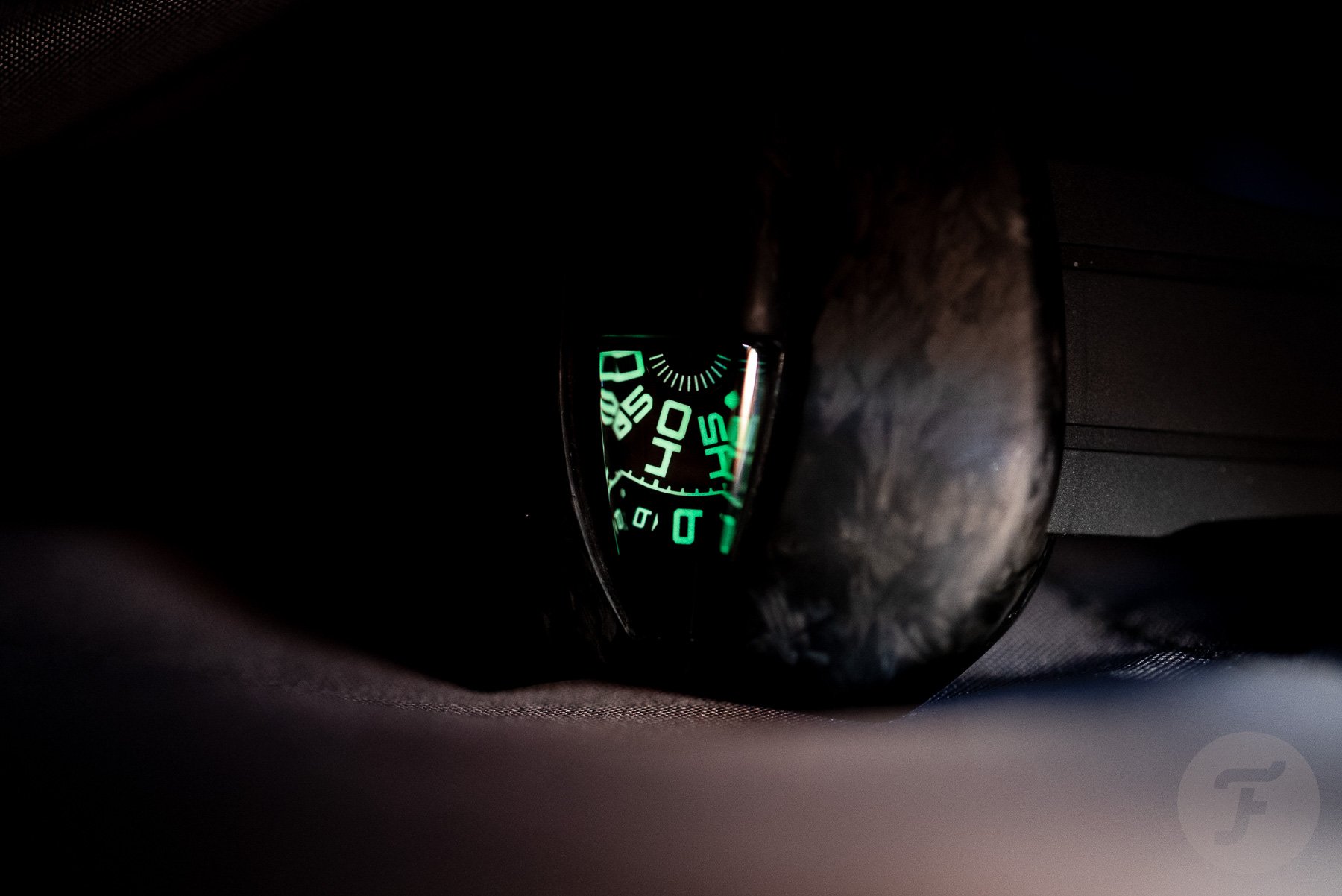Hands-On With The SpaceOne Jumping Hour Destro Forged Carbon
A few weeks ago, after many months of nagging, I finally received a SpaceOne Jumping Hour for a hands-on review. As someone in constant communication with Guillaume Laidet, the brand’s founder, I was fortunate enough to have followed the project from the jump-off to the point where, last year, my much-deserved beer at the Grand Duke pub in Geneva after a long drive from Germany was “spoiled” by him showing me one of the prototypes. Like the one I have here, that watch was a carbon model, albeit not a Destro. I told him he needed to send me one whenever the project was a go. That day finally came, and the SpaceOne Jumping Hour Destro Forged Carbon landed on my table.
Full disclosure: I’m not a lefty, and I don’t particularly fancy left-handed watches. Luckily for the brand, many versions of the watch sold out so fast that there weren’t many press samples left to choose from. But I don’t mind it; there’s something cool about a watch made for the other wrist.
SpaceOne
The brand we know as SpaceOne today did not start its life with this name. As some may remember, the initial idea was a Kickstarter campaign under a different name but with the same model in mind. The project was a success in collecting seven-digit support from backers. Then, the lawsuit came, eventually forcing Guillaume and his peers to change the brand name to SpaceOne. The watch was ready by then, and production was around the corner. All’s well that ends well, as the saying goes, and about a year since that ordeal, I’m happy to see that the SpaceOne Jumping Hour is now being delivered to and enjoyed by watch enthusiasts worldwide. Good news for fans of the brand: its second creation, the Tellurium, is now ready for pre-orders as well. I had the chance to see where the magic happens. More on that soon.
Jumping Hour
The jumping-hour complication dates back to the 1830s. Despite that, aside from a few Haute Horlogerie brands, you can’t find many models on the market these days. To find the biggest selection, you probably have to return to the late ’70s when the Swiss watch industry thought that fighting quartz watches meant creating mechanical timepieces that looked like quartz ones. These watches usually had low-grade movements and focused more on aesthetics. Most came from smaller brands, but bigger makers, such as Tissot, also had jump-hour models in the past. SpaceOne takes inspiration from the ’70s, albeit with a twist. The complication is reminiscent of those funky timepieces, and the case design is also out of the ordinary. Other iconic brands from the era, like Amida, will also be relaunched this year.
Carbon
The SpaceOne Jumping Hour comes in three case materials — steel, titanium, and forged carbon. I won’t list every version, but the options range from polished to brushed blued steel. You can find them all on the SpaceOne site. My Destro version is virtually the same as the regular model but with the movement and the hour and minute wheels flipped. So, regardless of which version you opt for, you get the same measurements. At its “longest” point, the watch is 41.6mm; this would be the lug-tip-to-lug-tip length if it had visible lugs. It also measures 52.9mm wide, including the crown. The thickness is not too bad at 13mm, so, aside from the width, the watch does not have out-of-the-ordinary measurements. On a 19.5cm (7.5”) wrist like mine, the watch sits comfortably.
However, I must mention that I’m not a massive fan of the 22mm rubber strap. It’s super stiff and thick, which is a bit uncomfortable for me. However, thanks to the quick-release spring bars, it takes seconds to remove it and throw the SpaceOne Jumping Hour on something you fancy. Or you can swap it for the additional OEM strap since black and orange options are both part of the package. Another thing that may be interesting to future buyers is that, while I got the Destro version for the right wrist, I wear mine on the left as I’m right-handed. That may not be as comfortable as the crown and the crown guards could be in the way. Then again, most right-handed people wouldn’t opt for a Destro watch anyway.
Soprod inside
The beating heart of the SpaceOne Jumping Hour is the Soprod P024, a 4Hz (28,800vph) caliber with a 38-hour power reserve. This version, though, is heavily modified by Theo Auffret. It comes without a date but has three discs. The closest to the center of the case with only hash marks is for the seconds, the middle one (on the destro) is the minutes, and the outer wheel is the hours. On the regular versions, the last two discs are the other way around. As the watch is automatic, you don’t need to wind it, and the crown does not screw down. Partially because of this, the watch is water resistant to 3 ATM. If you’d like to see the movement, the case back gives you a decent peek through its two sapphire windows. It is worth mentioning that this watch is not the most legible, but that goes for pretty much every jump-hour watch. But if you are wearing a SpaceOne, you won’t mind taking a second look and admiring the design.
Final thoughts
Only a few iterations of the SpaceOne Jumping Hour are still available since the watch was produced according to the original Kickstarter plans. You need to go on the site and see how many of each version are still in stock. As of today (April 24th, 2024), 10 units of the Destro Forged Carbon are left, for example. Also, the carbon versions are the only ones without the SpaceOne name on the front of the case. It is hard to inscribe forged carbon, so this is the one if you are looking for an anonymous model. My watch is priced at €1,900, but the steel versions go for €1,500 (excluding taxes).
Lastly, let’s address the elephant in the room. Yes, the SpaceOne Jumping Hour resembles the De Bethune Dream Watch 5, but with versions of that watch starting at around €200K, they’re in totally different leagues. I’m a fan of the SpaceOne Jumping Hour, and you should be too.

